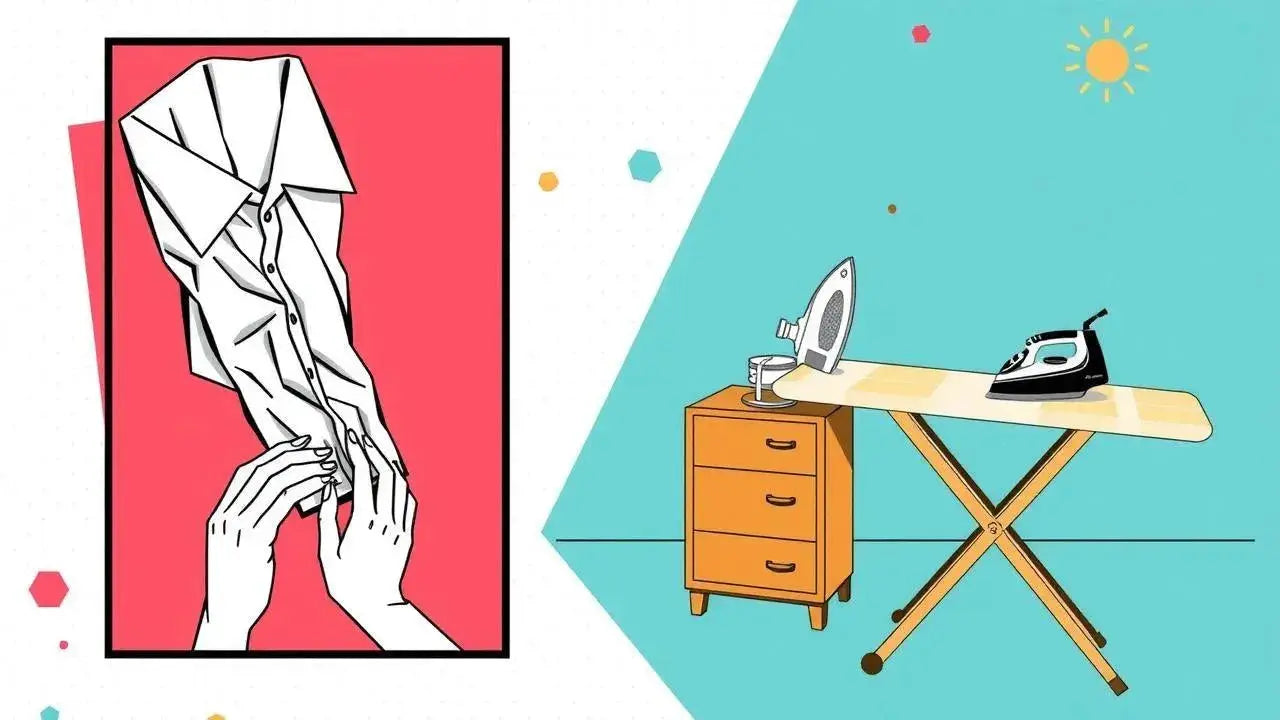
How to Fold a Shirt Sleeve Like a Pro
Why Fold Your Shirt Sleeves Neatly?
Folding your shirt sleeves neatly is more than just a matter of aesthetics; it reflects attention to detail and a sense of personal style. A well-folded sleeve can make a significant difference in your overall appearance, whether you’re dressing for a business meeting or a casual outing. When your sleeves are neatly done, it gives off an impression of professionalism and organization. For instance, if you're going for a smart-casual look, neatly folded sleeves can transform a button-up shirt into a polished outfit. Additionally, neat folds help prevent wrinkles from forming, keeping your shirt looking crisp throughout the day. This simple act not only elevates your look but also contributes to your confidence, showing that you care about how you present yourself to the world.
Step 1: Lay the Shirt Flat

To start, find a clean, flat surface where you can work comfortably. Lay the shirt down with the front side facing up. This position helps you see any wrinkles or creases that need smoothing out. Take a moment to gently pull the fabric taut, ensuring it lies completely flat. If there are any obvious wrinkles, smooth them out with your hands. A well-prepared surface sets the tone for a neat and professional fold, making the subsequent steps easier and more effective.
Step 2: Fold the Sleeve Back
To fold the sleeve back, start by grabbing the cuff of the sleeve with one hand. Gently pull it towards the elbow, making sure to create a smooth, clean fold. The key here is to keep the fabric taut but not stretched, which helps maintain a crisp look. As you fold, ensure that the edge of the cuff aligns nicely with the shirt's body, forming a straight line. This not only looks better but also makes it easier to manage the next steps in the folding process.
Step 3: Adjust the Fold
Now that you've folded the sleeve back towards the elbow, it’s time to make the fold look sharp and professional. Start by aligning the sleeve with the shoulder seam. This helps create a consistent look across both sleeves. Check that the fold is even; you want it to be uniform, not lopsided. If the fold isn’t sitting right, gently tug at the fabric to adjust it. You can also run your fingers along the fold to smooth out any bumps or creases. This step is crucial because a well-adjusted fold not only looks better but also helps the shirt maintain its shape. For example, if you're wearing a dress shirt for an important meeting, these small adjustments can make a big difference in your overall appearance.
- Make sure the fold is even on both sides.
- Smooth out any wrinkles with your hand.
- Adjust the position of the cuff if necessary.
- Ensure the sleeve length matches the other side.
- Check for alignment with the shoulder seam.
- Tuck in any loose fabric for a tidy look.
- Give it a final inspection before moving on.
Step 4: Repeat on the Other Sleeve
Now that you've folded the first sleeve, it's time to mirror that effort on the other side. Start by grabbing the cuff of the second sleeve, just like you did before. Fold it back towards the elbow, ensuring the fold is clean and sharp. Pay attention to the alignment; it should match the first sleeve perfectly. A symmetrical look not only enhances your shirt's appearance but also reflects your attention to detail. Take a moment to adjust any uneven edges, and check that both sleeves look equally neat. This final step is crucial for achieving that polished, professional vibe.
Using a Visual Guide to Check Your Work
A visual guide can significantly enhance your folding technique. After folding each sleeve, take a moment to stand in front of a mirror. This allows you to see if the sleeves align properly and if the folds look crisp. If you notice any unevenness, adjust the sleeves accordingly. You can also take a quick photo of your folded sleeves. Comparing it with an ideal reference image can help pinpoint areas for improvement. This simple step ensures your shirt sleeves not only look tidy but also reflect a polished style.
Final Thoughts on Shirt Sleeve Folding
Folding shirt sleeves neatly is more than just a matter of appearance; it's about creating a polished, put-together look that reflects attention to detail. When you take the time to fold your sleeves correctly, it shows that you care about your presentation, whether you're at work or out socializing. It’s a small yet impactful skill to master. Think of occasions where you might need to impress—job interviews, important meetings, or even a first date. A well-folded shirt sleeve can subtly enhance your confidence and the way others perceive you. Plus, once you get the hang of it, this technique takes just seconds to execute, making it a worthwhile addition to your grooming routine. So next time you dress up, remember that those crisp, neatly folded sleeves can make all the difference.
Frequently Asked Questions
1. What materials do I need to fold a shirt sleeve properly?
To fold a shirt sleeve like a pro, all you need is the shirt itself. Keeping the shirt clean and wrinkle-free can help you get a better fold.
2. Is there a specific way to fold long sleeves compared to short sleeves?
Yes, long sleeves are often folded differently. For long sleeves, you'll usually want to roll them up neatly while short sleeves can be folded back simply.
3. Can I use this folding technique for any type of shirt?
Definitely! This folding method works well for various types of shirts, whether they’re dress shirts, casual tees, or even blouses.
4. How do I ensure the folded sleeves look neat and tidy?
To keep the folded sleeves looking neat, smooth out the fabric before folding and align the edges carefully to avoid any wrinkles.
5. What’s the best way to store a folded shirt with sleeves?
Store the folded shirt flat in a drawer or on a shelf to maintain its shape. Avoid hanging it for long periods to prevent stretching.
TL;DR Learn to fold shirt sleeves neatly with these simple steps: lay the shirt flat, fold the sleeve back to the elbow, adjust for evenness, and repeat on the other sleeve. Use a mirror to check your work for a polished look.



